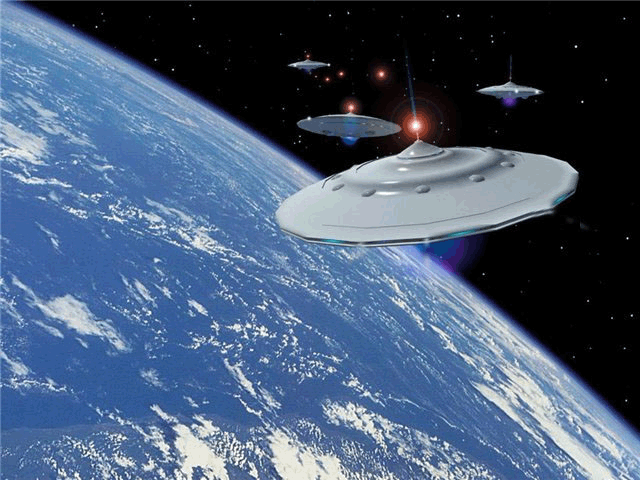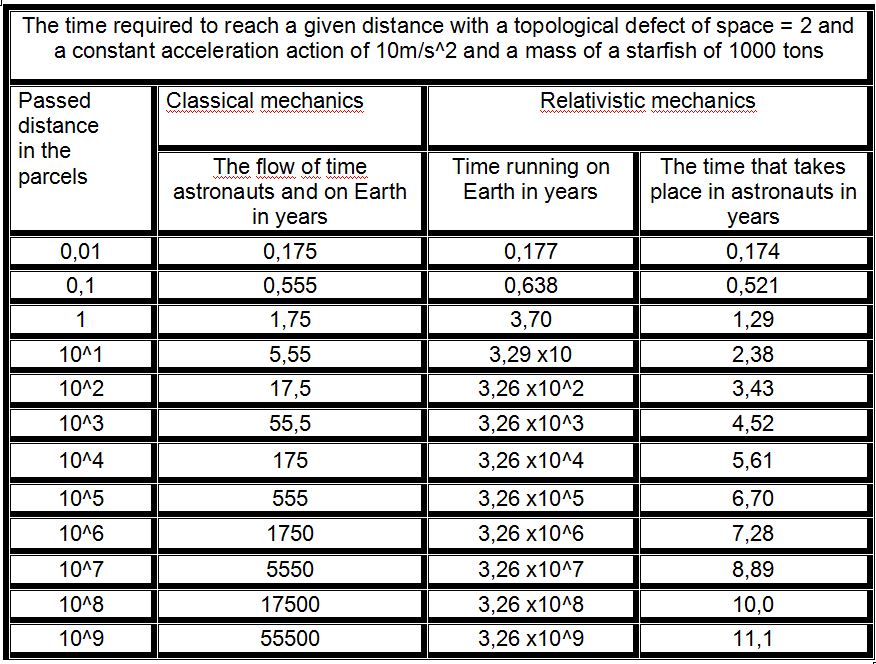Across the Universe.
Apollo 11 was the space mission deliver American astronauts Neil Amstrong, Edwin Aldrin and Michael Collins to the Moon in July 1969. The duration of this space travels eight days.
But already when planning space flights to other planets of the solar system, the duration of the trip become an important factor to be reckoned with. Long stay in space dramatically complicates the mission.
For example, today, in order to reach Venus with the least expenditure of fuel, it takes about 110 days, Mars — 167.
But is there a speed limit beyond which our swiftly rushing bodies can no longer withstand?
The current record of speed record equally belongs to three astronauts who participated in the space mission «Apollo 10» — Tom Stafford, John Young and Eugene Cernan.
In 1969, when astronauts flew around the moon and came back, the capsule they were in, developed a speed that would be 39,897 km/h. In fact, there is no limit to the speed with which we can move, except to the speed of light.
Of course, this requires the use of efficient engines and the time of travel to the planets of Solar System can be significantly reduced. The flight duration essentially increases if we want to fly to other stars and other galaxies. Here the time factor becomes crucial. The speed of the spacecraft on various sections of the path is limited by the limiting acceleration that passengers and the volume of the fuel of the engine can carry for a long time.

As alternative such engines, suggest using an unusual gyroscope. His work is described on my site: https://www.isan.com.ua

In fact, it is a computer-controlled generator of entropic (gravity) forces, possessing action at a distance and have wide diapason of power. Varying the values of the mass of the rotor of an unusual gyroscope and the speed of the coherent oscillation, its rotational accelerations, according to Newton’s second law, we can lay the necessary power on a large scale in the design of spacecraft. This is the first device for controlling gravity, which does not violate the fundamental laws of physics, is environmentally friendly, and does not require the use of exotic masses and energies. Fundamental theory in the base of an unusual gyroscope — Holographic Principle.

- an engine that does not require a propellant,
- a movement that bypasses the general speed limit,
- and most importantly, we have a breakthrough way of obtaining energy for the unusual gyroscope, which naturally arises from the coherent oscillations of its rotor (its mass elements) in a vacuum.
So, the advantage of an unusual gyro as an engine is the lack of fuel on board.
For flights in the solar system, today we can limit ourselves to the insignificant thrust of a very small engine based on an unusual gyroscope with the generation of entropic forces of about 30 N. In open space, a ship weighing about 100 tons to moved with accelerated of 30×10¯³ m/s².
This acceleration is enough to get the accumulate the high speed for interplanetary flight and to get to Mars in 4 days.
If we equip the spacecraft with such an engine, but with more power, which is quite realistic, it will be possible to move with a constant acceleration of 10m/s², and passengers will feel superb. There will be no state of weightlessness. People will stand at the bottom of the spacecraft cabin in the same way as they did in different rooms during normal life on Earth and will experience the same physical sensations, including the same weight of individual parts of their body and weight other subjects. This is explained by the fact that the acceleration of gravity on the Earth is practically the same, and is equal to 9.81 m/s².
Of course, it is too early to talk about the specific values of the entropy (gravitational) forces obtained on an unusual gyroscope, as the project is practically not implemented. However, numerous data obtained in the experimental setup demonstrate the possibility of generating commensurate with powers of entropy forces necessary for the realization of such accelerations. According to the Holographic Principle, all movement in the universe results from a coherently oscillating and expanding surface of the holographic horizon. And this is clearly seen on the simulator when we load the extremely simple formula (the coherent law of evolution). This emerged in the simulator - the demonstration dynamics of projections of the particles of the Standard Model on a spherical screen. Each particle consists of a pair of projections that move strictly on their half of the screen. If the oscillations are synchronized, then the entire mass it self-begins to produce coherent oscillations. The rotor of the unusual gyroscope have coherent oscillating with magnets induces a current in the stator coils and we get the electrical energy of the zero point (screen). It's like an electric guitar when the strings vibrate. Only these are the strings from the Theory of Strings, which led to the Holographic Principle.
So, for interstellar travel, we will proceed from the possible constant acceleration of 10m/s².
With such acceleration over huge distances, the speed can reach very large values. And at high speeds, the classical laws of mechanics, Newton’s laws, are limited by the scale of applicability. It is necessary to use the laws given by Einstein’s theory of relativity. The laws of relativity, are also limited by the scale of applicability, and therefore dark matter was introduced.
In the opinion of cosmologists, dark matter can be the initial (emerging at the time of the Big Bang) defects of space, which can allow a spacecraft with a constant «earth» value of acceleration to cross the space somewhat faster. For the convenience of calculations, we have chosen a coefficient (topological defect) of space equal to 2.
To perform the calculations, it is more convenient for us to assume that the ratio of the entropic force generated by an unusual gyroscope to the mass of the spacecraft remains constant throughout the motion, and this ratio is quite real (realizable in practice):
b = 10 m/s² (1).
If, for cosmic flights, classical mechanics operated toward the stars and galaxies, then during the entire time of the motion the acceleration α would be constant and the equality would be valid:
α = b. (2).
The theory of relativity gives the following form for instantaneous acceleration:
α = b (1 - v²/c²)½, (3).
where v is the speed of the spaceship at α given moment, c is the speed of light in a vacuum. For very small velocities v in comparison with the speed of light, formulas (2) and (3) practically give the same acceleration value, but when the ratio v/c is not very small, formula (2) is already incorrect.
If the motion were to follow the laws of classical mechanics, the acceleration would be constant and equal b. Then the velocity v and the traversed path S in time t after the start of motion would be determined by the formulas:
v = bt. (4).
S = b t²/2. (5).
However, as the speed increases, and approaching it to the speed of light, the acceleration will decrease. Because of this, the formula for speed and traversed path at time t, given by relativistic mechanics, ie, mechanics based on the theory of relativity, have the following form:
v = bt/(1 + b² t²/c²)½. (6).
S = (c²/b) ((1 + b² t²/c²)½ -1). (7).
From the standpoint of classical mechanics, the speed of the body can become arbitrarily large. We can see this in formula (4). The main law of relativistic mechanics is the law on the impossibility of overcoming the speed of light. If the time t is unlimitedly increased in formula (6), then the velocity v will increase, it will approach the speed of light, but it will never exceed it.
The theory of relativity asserts that the course of time in two moving systems relative to one another is different. Namely, if at the initial moment, when the spacecraft rested on the surface of the Earth, the time course for its passengers and the course of time for the inhabitants of the Earth was the same, then after the spacecraft began to move, the course of time would slow down in it. A small time interval t2 - t1 on the Earth will correspond to a small time interval in the rocket τ2 - τ1.
τ2 - τ1 = (t2 - t1) (1- v²/c²)½. (8).
This means that if astronauts leave the Earth, fly at high speeds, and then return to Earth, it turns out that from separation and until the meeting time, they passed significantly less than the inhabitants of the Earth. One of the twins traveling in space, after returning, will be younger than the twin that remained on Earth. Moreover, the father, who left a young son on the Earth and made a space trip at high speeds, can, after returning to Earth, remain a relatively young man, his son to be a decrepit old man.
If the motion occurs with a constant, as we took the ratio b of the rocket thrust forces to its mass, then from the relation (8) one can obtain a connection between the time t passed on the Earth and the time τ passed in Space
τ = (c/b)(Arsh bt/c), (9).
where Arsh is a function inverse to the so-called hyperbolic sine. The tables of this function are given in many mathematical reference books. According to formula (9), τ is always less than t, and the more t the more important is the difference between τ and t. This effect is sometimes called the relativistic extension of time.
In the table for different distances, the time necessary for the spacecraft to pass as an engine of an unusual gyroscope is calculated, for which the ratio of the entropy (gravitational) pull force to the mass is constant all the time and equal to 10 m/s² In the second column, the time is given by classical mechanics according to formula (5) is given. In fact, the spacecraft will not move according to the laws of classical mechanics, since the speeds achieved are very large. According to the formula (4), they are also obtained many times more than the speed of light, and we give this column only to show how erroneous the results of classical mechanics are in such cases. The third column calculates the time that will pass on Earth until the spacecraft reaches the specified distance. At b = 10 m/s², the spacecraft already at a distance of 1/2 ps will develop a speed very close to the speed of light, and therefore at distances of many parsecs the time required for flight is practically the same as the time needed for the passage of light, starting with the fifth line, the data in the third column are numerically equal to the number of light years at the specified distance.
The enormous saving of time that flows in the spacecraft, in comparison with the time on the Earth, is achieved due to the fact that the overwhelming majority the spacecraft is moving at a speed very close to the speed of light. In this case, as the formula (8) shows, the time interval τ2 - τ1 can be very small in comparison with the time interval t2 - t1.
In general, the table shows that if the constant ratio of the traction force of an unusual gyro to a mass of the spacecraft equal to 10 m/s² is maintained at all times, then a visit to any areas of the Universe that we survey is available to a person. Even for the achievement of remote galaxy accumulations located at a distance of 1000 Mpc, with a useful weight of 1000 T stars and comfortable acceleration, it will take only 11 years. If the topology of space is greater, then for 11 years you can fly the entire universe. All previous calculations were carried out on the assumption that the experimental data confirm the order of the entropy forces and they can be ensured during the entire time considered at the expense of the energy of the holographic screen. Then, as a result of using an engine based on an unusual gyro, the constant value of the thrust force to the mass of the spacecraft will be 10 m/s².
Let's see now, is it possible to achieve practically effective space flights without using an unusual gyroscope as a spacecraft engine? What will the energy calculation show for conventional reactive technology in space?
It is easy to see that the currently used space rocket engines burning chemical fuels are dangerous, "environmentally dirty", completely ineffective for travel to the planets of the solar system, and are generally not suitable for travel to the stars and galaxies.
The most important role is played by the velocity ω, with which the gases forming during combustion fly out from the rocket nozzle. The more this speed, the greater the acceleration in the opposite direction will the rocket have. The speed of the emission of gases is greater the higher the temperature of the combustion. The temperature is limited by the ability of the material from which the rocket nozzle is made to withstand high temperatures, do not melt. The limit in this respect is 4000 K. At such a combustion temperature, from some types of fuels, it is possible to obtain a release velocity ω of about 4 km/s.
In astronautics the formula is known:
v/ω = 2.3 lg (m0/m), (10).
m0 is the mass of the rocket with fuel, m is the mass of the rocket after the combustion of the fuel, ω is the velocity of emission of gases from the nozzle, and v is the velocity that the rocket will acquire after the fuel is consumed. This formula is true only in the framework of classical mechanics when both the velocity of the emitted gases and the speed achieved by the rocket are very small in comparison with the speed of light. Both these conditions are observed in this calculation.
We see that the magnitude of the speed achieved by the rocket is greater, the larger the ratio of the mass of the rocket with the fuel to its mass without fuel. But how great can this attitude be? Suppose unlikely that we managed to build a rocket in which 0.999999 mass% is fuel so that the weight after the fuel consumption is only one-millionth of the rocket's weight at the start. Then the right-hand side of (10) will be 13.8 and, therefore, if the gas emission rate is 4 km/s, the rocket can reach a speed of 55.2 km / s. Until very high speeds are achieved and classical, mechanics can be used, the constant ratio of the traction force to the rocket mass is 10 m/s2 equal to the acceleration of the rocket. The speed of 55.2 km/s will be reached after 2760 seconds when the traveled path will be equal to 76,000 km. After this distance, the fuel will be exhausted, the device of the rocket will cease to function.
Thus, the currently used method in astronautics rocket propulsion with the combustion of chemical fuel cannot be used to fly to the stars and galaxies. It is fit only within the Solar System and only because at the moment there is no alternative to such movement in space - engines based on an unusual gyroscope - a generator of gravitational forces.

The idea of this article and calculations, as well as the description of flights in the universe with the help of the then still unknown gravitational-holographic method of displacement in space, belongs to the well-known scientist, Soviet and Russian astronomer, professor of St. Petersburg University: Tateos Artemievich Agyekyan.
Predicted almost 60 years ago, ways of travel in space can find opportunities for a practical inquiry after prototyping an unusual gyroscope today.
References.
- Tateos Artemievich Aghekyan "Stars, galaxies, metagalaxies". 1 st ed. L., 1966 (3rd ed. - M., 1981).